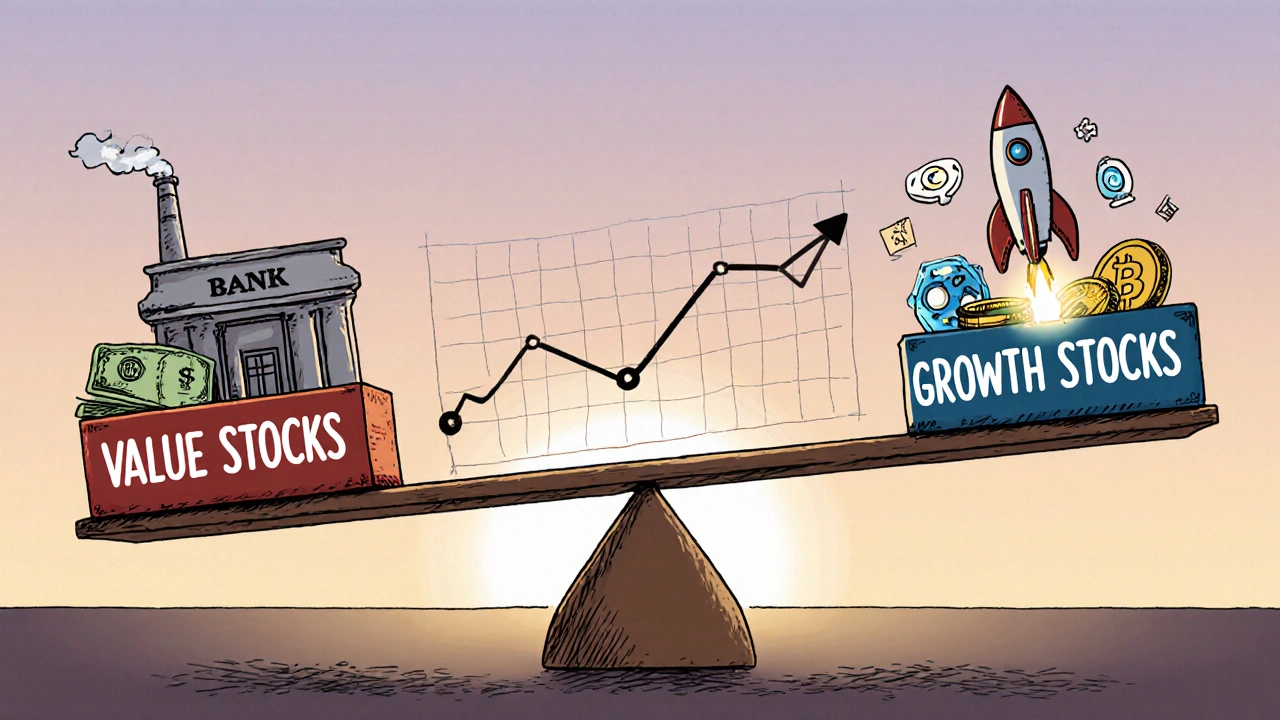Style Diversification: How to Spread Risk Across Investments Without Losing Focus
When you hear "diversification," most people think of owning lots of different stocks or funds. But style diversification, the practice of spreading investments across different approaches to picking assets, like growth, value, or momentum. Also known as factor diversification, it’s what separates investors who ride out market swings from those who panic when one type of stock crashes. You can own 50 different ETFs, but if they all chase the same kind of performance—say, fast-growing tech companies—you’re not diversified at all. You’re just holding a bunch of similar bets with different labels.
Style diversification works because not all investment styles perform at the same time. Growth stocks, companies expected to earn big profits fast, like AI startups or biotech firms might boom when interest rates are low and investors are feeling bold. But when inflation spikes or the economy slows, value stocks, cheaper, established companies with steady cash flow like utilities or banks often outperform. Then there’s momentum investing, buying stocks that are already rising, betting the trend continues—it can crush returns for months, then suddenly reverse. Mixing these styles means you’re not betting everything on one type of market mood.
Most people don’t realize their portfolio is style-concentrated. Maybe you bought a "broad market" ETF and assumed you’re covered. But many of those funds lean heavily toward growth, especially if they track popular indexes like the S&P 500. That’s why you see investors lose big during tech sell-offs—even though they thought they were "diversified." Real style diversification means intentionally including funds that target different drivers of return. You don’t need to pick them yourself. Many robo-advisors and factor-based ETFs do it for you, like those tracking low-volatility, quality, or small-cap value strategies.
It’s not about chasing the hottest style each year. It’s about building a portfolio that works no matter what the market throws at you. If growth tanks, value picks up. If interest rates climb, dividend-focused stocks hold steady. If inflation spikes, real assets like REITs or commodities might step in. You’re not trying to time any of it—you’re just making sure your money isn’t tied to one story.
The posts below show you exactly how to do this without overcomplicating things. You’ll find guides on how to spot style bias in your current funds, how to add low-cost ETFs that cover value or momentum, and how to rebalance without paying unnecessary fees. You’ll see how even simple moves—like shifting 10% of your portfolio into a small-cap value fund—can smooth out your returns over time. No fancy math. No insider secrets. Just clear, practical steps to make your portfolio stronger, no matter what’s happening in the news.
Style Diversification: How to Mix Value and Growth Investments for a Stronger Portfolio
Mixing value and growth investments reduces portfolio volatility and protects against market swings. Learn how to build a balanced portfolio using ETFs and avoid common timing mistakes.
View More